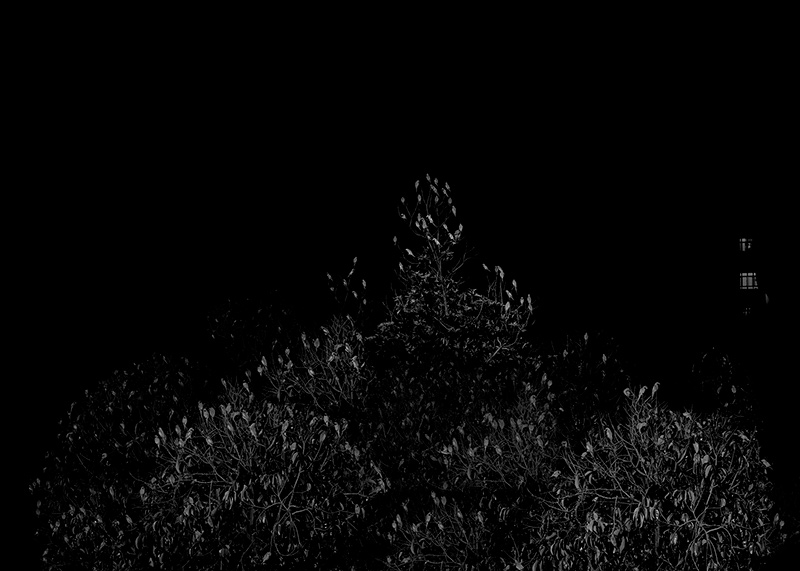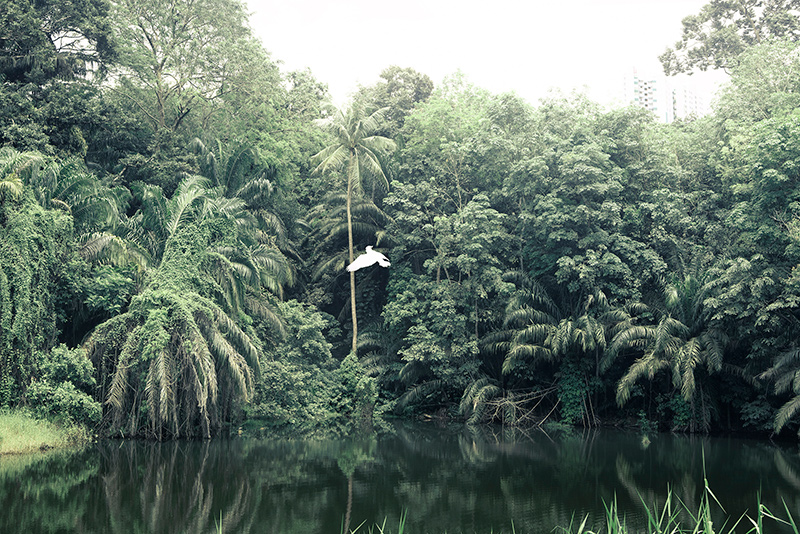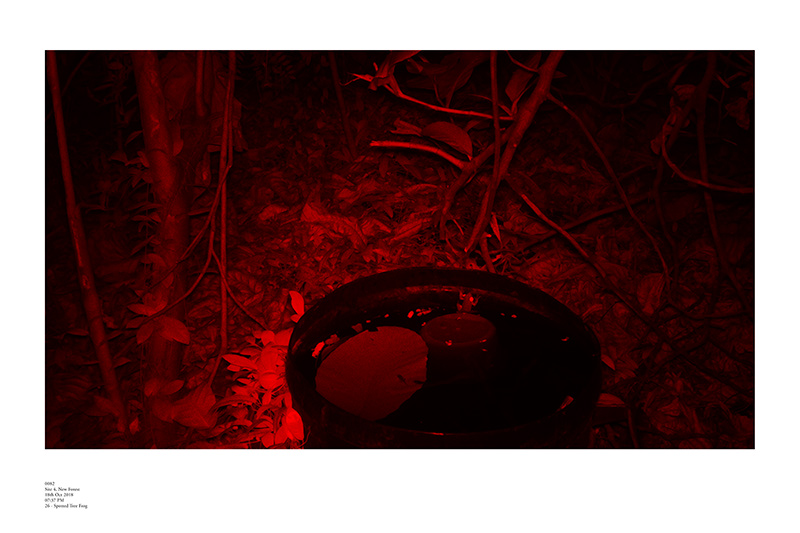All images by the ICZ
NEW FOREST
Presented by The Institute of Critical Zoologists
Since the 1950s, global changes such as deforestation and urbanisation have affected animals and plants in different ways. Sometimes they suffer through human development, and sometimes humans produce situations that allow novel organisms to thrive. Due to a dramatic increase in travel and trade, animals and plants have also crossed into new territories, creating new ecological categories of ‘invasive’ and ‘native’ species. Most conservation efforts are aimed at destroying the former and protecting the latter, though increasingly, more ecologists are conceding that these categories are fluid and unstable. New Forest exposes a variety of collisions; between nature and the city, invasives and natives. Sometimes these result in violent encounters: competition, predation and extinctions. Other times these interactions result in a new, precarious balance, and a destabilising of categories of foreign and local, noxious and useful.
The images in this show are drawn from Singapore and Taiwan. In Singapore, the artist has spent the last year documenting a small secondary forest where migrant humans and animals have created a new wilderness. Using infrared cameras placed around an abandoned base camp, he captured vagabond species that have come to drink from pails, creating strange, otherworldly tableaux. The images from Taipei are underscored by violence. They come from various “extermination drives” the artist took part in, including a frog survey in Taipei where he captured the invasive Spotted Tree Frog with volunteers. Other pictures explore narratives about failed or futile eradication efforts, such as a jar of Brown Anoles in a Taipei research institute. In Chiayi, the government paid villagers to capture these invasive creatures, but their population has not been significantly reduced.
For more information, click here.
 White Kingfisher, Singapore, 2019 180cm x 120cm
White Kingfisher, Singapore, 2019 180cm x 120cm
Birdwatchers near the reclaimed lands of Singapore mistook this kingfisher for a moulting kingfisher, or an albino kingfisher, until conservationists theorized that the kingfishers living in the sand dunes had adapted to life in the sand by turning white as camouflage. This phenomenon emerged as a consequence of land reclamation in Singapore during the 70s. Lighter-bodied Kingfishers were able to blend in with the light-coloured sand and were less likely to be eaten by birds of prey in the reclaimed lands. Because the light-coloured Kingfishers were much more effective at hiding from predators, the frequency of the normal morph rapidly dropped to about 0.01%, a phenomenon known as adaptive melanism.
 New Forest I, 2019 111cm x 74cm
New Forest I, 2019 111cm x 74cm
 Parrot Count II, Singapore, 2019 90cm x 60cm
Parrot Count II, Singapore, 2019 90cm x 60cm
 Parrot Count I, Singapore, 2019 210cm x 150cm
Parrot Count I, Singapore, 2019 210cm x 150cm
In February 2019, I participated in the 9th Annual Parrot Count in Singapore, where volunteers participate to count the total number of parrots they see all over Singapore in a single day over different sites. We counted 492 parrots that day at our site. The parrots consists of mainly the invasive Red-Breasted Parakeets. Their numbers are increasing every year and may pose a threat to local native parrots.
 Spotted Tree Frogs, Taipei, 2019 111cm x 74cm
Spotted Tree Frogs, Taipei, 2019 111cm x 74cm
 Spotted Tree Frog Survey, Taipei, 2019 150cm x 100cm
Spotted Tree Frog Survey, Taipei, 2019 150cm x 100cm
In May 2018, I volunteered in a frog survey in Taipei to remove an invasive species of frog, The Spotted Tree Frog. We caught a total of 52 frogs that night. It is very easy to mistake the invasive species with the native species, Taiwan’s endemic white-lipped frog. They look almost identical. The same group of volunteers are also interested in the Brown Anole, a South American lizard that is also invading Taiwan. This lizards are also hunted by the thousands, with the government giving a bounty every season for the removal of these lizards. They villagers would usually keep the capture lizards, sometimes a few hundred thousand, in a single vat of alcohol until the end of the season to collect their bounty. Believed to be imported into Taiwan with plants, the brown anole’s first recorded sighting was in 2000 near a plant nursery in Chiayi County. The lizard is originally from Cuba and the Bahamas and it is listed as the top 100 invasive species of all time. The Brown Anole is also present in Singapore, believed to have been accidentally imported with the plants that are used at the famous garden, Gardens by the Bay. The images were taken during the artist research trips to Taiwan.
 The building of a new Garden, Brown Anole, Singapore, 2019 111cm x 74cm
The building of a new Garden, Brown Anole, Singapore, 2019 111cm x 74cm
 133,300 Brown Anoles, Taiwan, 2019 111cm x 74cm
133,300 Brown Anoles, Taiwan, 2019 111cm x 74cm
 Himalayan Vulture, Singapore, 2019 150cm x 100cm
Himalayan Vulture, Singapore, 2019 150cm x 100cm
Improvements in sanitation have led to a decrease in food sources for Himalayan vultures in the mountain peaks. This has resulted in young vultures flying to Singapore, some 14,000km away from their original habitats, to look for new sources of food. One theory suggests that the vultures could be attracted to the wild cows and deers that roam deep in the secondary forests of Singapore.
 A Chinese blue magpie, A Taiwan blue magpie and their hybrid, Taiwan, 2019 150cm x 100cm
A Chinese blue magpie, A Taiwan blue magpie and their hybrid, Taiwan, 2019 150cm x 100cm
In 2002, a Chinese blue magpie, whose native range is in the Western Himalayas, Vietnam, Cambodia and Myanmar, was spotted in Wuling Farm in Heping Township, Taichung County. It is believed to have escaped from a private enclosure. By 2006, 10 individuals were spotted in the vicinity. Some scientists were concerned that this species might threaten the survival of the native Taiwan blue magpie. The two species were believed to be from the same family that branched off several million years ago. Now they have slight differences: the red-billed blue magpie has red eyes, a white neck and chest, while the blue magpie has yellow eyes, a black neck and blue chest. When it was discovered that the two species were interbreeding, scientists were worried that this would further threaten the survival of the native blue magpie and contaminate its unique genes. In 2007, a removal plan of the Chinese blue magpie was launched and the population of the invasive species was successfully controlled.
 New Forest II, 2019 111cm x 74cm
New Forest II, 2019 111cm x 74cm
 New Forest III, 2019 111cm x 74cm
New Forest III, 2019 111cm x 74cm
A forest that the artist has placed camera traps inside since 2016. In this forest (green spaces that exists on the edge of cities) the artist studies the secondary forest that is home to all these new species that has adapted to them.

22nd Jan 2019
The Chinese Blue Magpie, an escaped pet, also lives inside the secondary forest. Through the images taken by the camera trap, the artist saw the bird grew up beside the water container and to learn to hunt tadpoles of the Spotted Brown Frog.


22nd Jan 2019
The spotted tree frog, which is an invasive species in Taiwan, lives inside an abandoned container in the forest.
Copyright 2019, Institute of Critical Zoologists